What Is Digital Marketing?
What is digital marketing and how does it work? In today’s digital world, understanding how online marketing functions is essential for any business aiming to grow. From SEO and content marketing to social media and paid ads, digital marketing offers powerful tools to reach the right audience.
Digital marketing refers to the promotion of products, services, or brands using online platforms and digital technologies. It encompasses strategies and tools that help businesses connect with their audience, build relationships, and drive growth through the Internet. Unlike traditional marketing, digital marketing allows for precise targeting, measurable results, and the flexibility to adapt strategies based on real-time data.
Digital marketing channels include:
- Search engines (SEO and SEM)
- Social media platforms (Facebook, Instagram, LinkedIn, etc.)
- Websites and blogs
- Email campaigns
- Mobile applications
With the rapid digital transformation, businesses of all sizes rely on digital marketing to stay competitive in an ever-evolving marketplace.
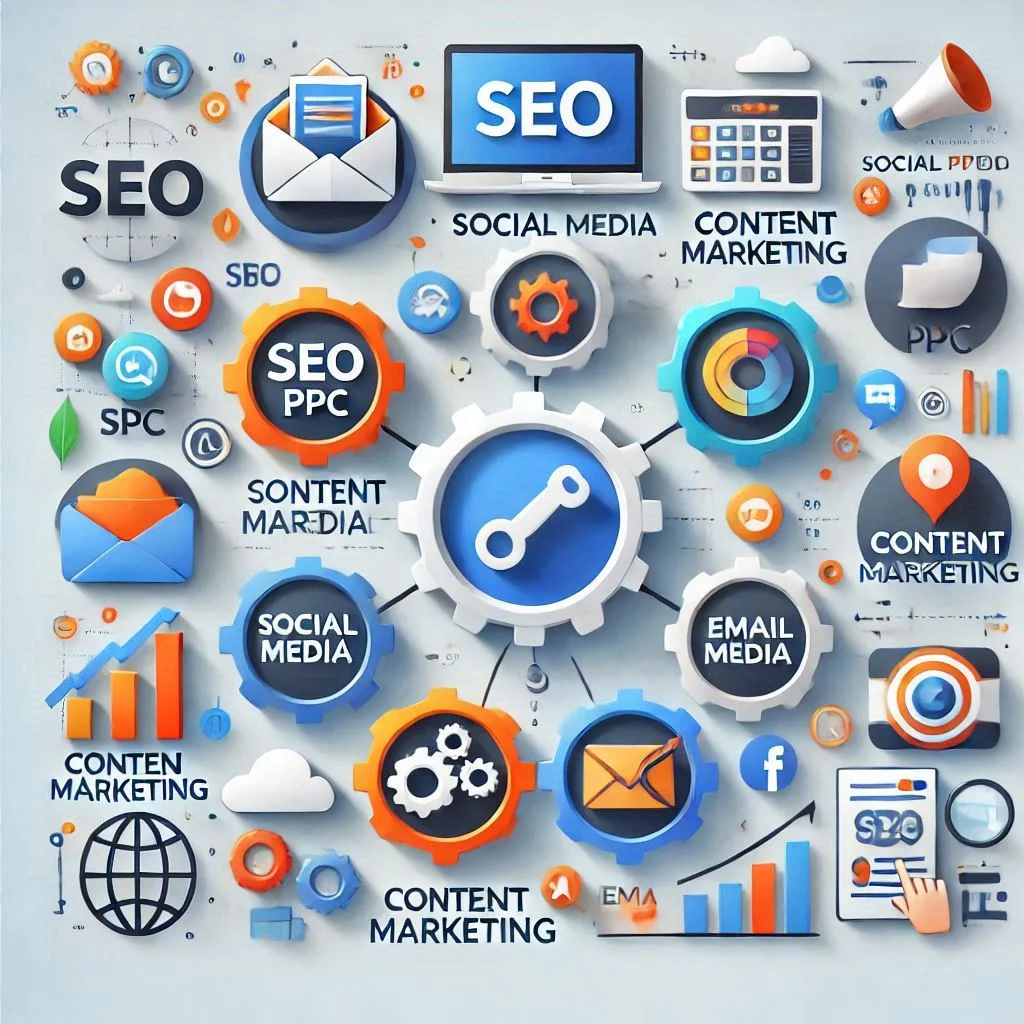
Key Takeaways
- Broader Reach: Digital marketing eliminates geographic barriers, enabling businesses to reach a global audience.
- Cost-Effective: Compared to traditional methods, digital marketing is budget-friendly and delivers a high return on investment (ROI).
- Measurable Results: Tools like Google Analytics provide insights into campaign performance, audience behavior, and conversion rates.
- Flexibility and Scalability: Strategies can be adjusted based on performance metrics, ensuring continuous optimization.
- Customer Engagement: Social media, email, and other channels enable direct communication, fostering relationships and brand loyalty.
These points underline why businesses should prioritize digital marketing in their strategies.
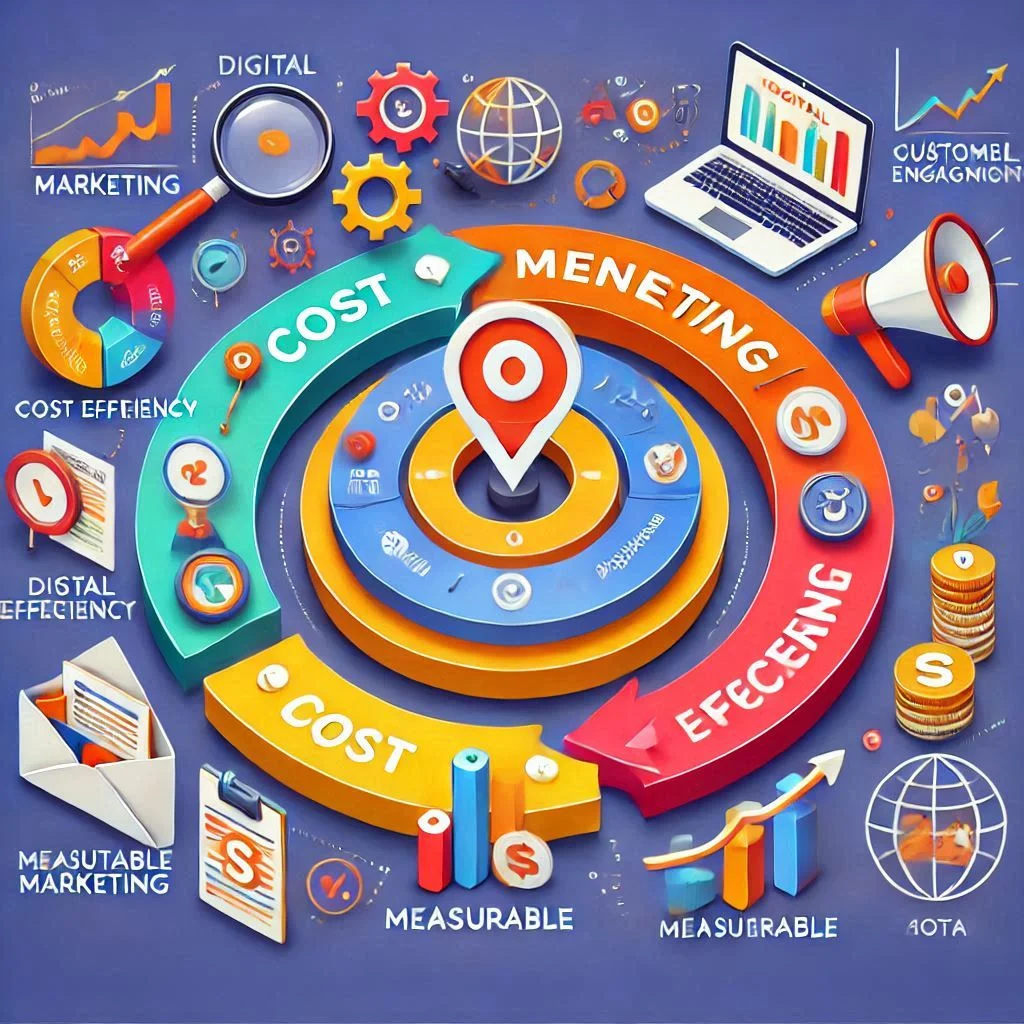
Why Is Digital Marketing Important?
Digital marketing is crucial in today’s world for several reasons:
- Consumer Behavior Trends: With over 4.9 billion internet users globally, most consumers rely on online platforms for information, shopping, and entertainment.
- Data-Driven Insights: Digital marketing allows businesses to analyze customer preferences and refine strategies for better targeting.
- Competitive Advantage: Staying visible and relevant online ensures businesses remain competitive against industry rivals.
- Higher Conversion Rates: Optimized campaigns target the right audience, increasing the likelihood of lead conversion.
- 24/7 Accessibility: Digital marketing operates around the clock, ensuring consistent brand visibility.
Adopting a robust digital marketing strategy ensures a business remains relevant, competitive, and profitable in a digital-first world.

Digital Marketing for B2B vs. B2C
Digital marketing strategies differ for B2B (business-to-business) and B2C (business-to-consumer) audiences.
B2B Digital Marketing:
- Focus: Building relationships and trust with decision-makers.
- Channels: LinkedIn, email campaigns, and long-form content like whitepapers or case studies.
- Goals: Lead generation and nurturing for long-term partnerships.
- Approach: Educational and professional tone targeting logical decision-making.
B2C Digital Marketing:
- Focus: Engaging individual consumers and driving emotional connections.
- Channels: Social media platforms, influencer collaborations, and personalized email campaigns.
- Goals: Immediate conversions like purchases or subscriptions.
- Approach: Entertaining, engaging, and visually appealing content.
Understanding the differences between B2B and B2C audiences helps craft strategies that resonate with the respective target group effectively.
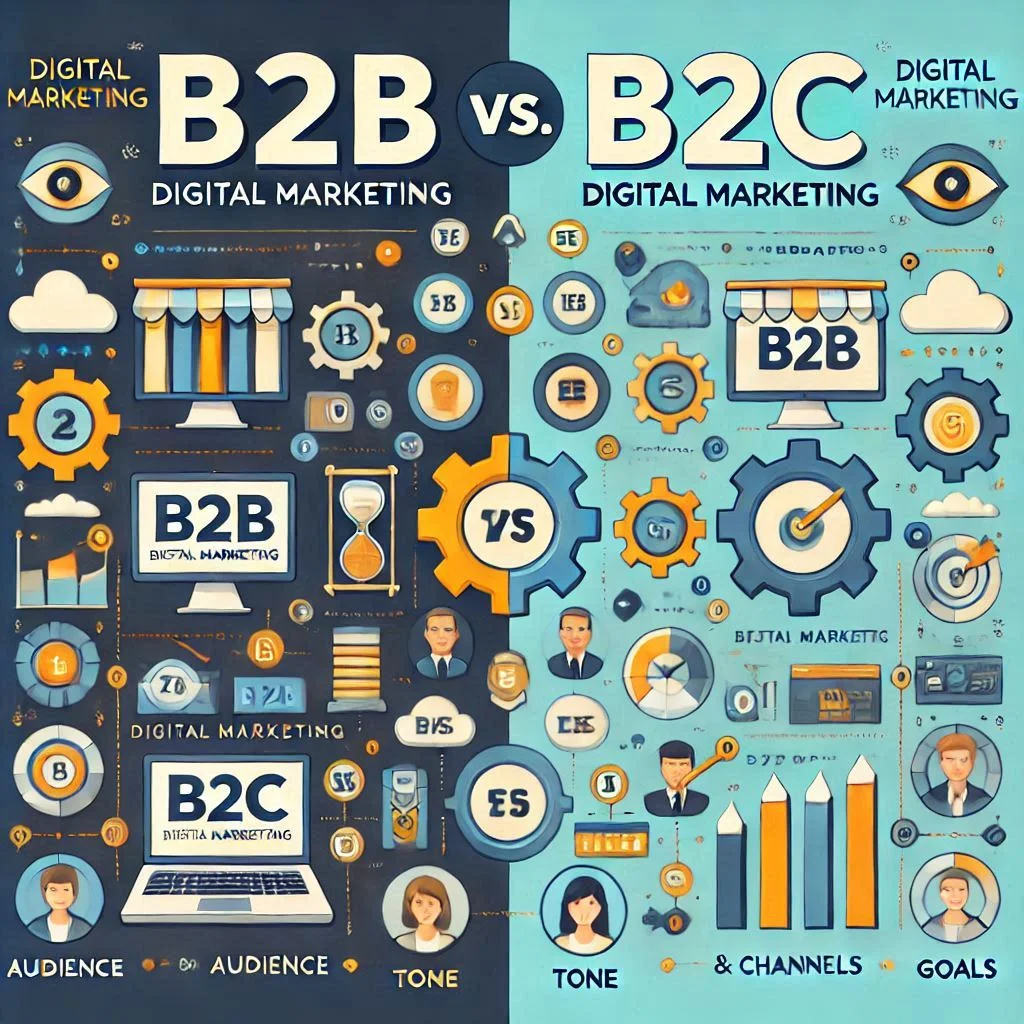
How Digital Marketing Works
Digital marketing operates through a systematic process designed to attract, engage, and convert target audiences. By leveraging a combination of strategic planning, creative content, and data-driven tools, businesses can effectively reach their goals. Here’s a detailed breakdown of how digital marketing works:
Define Your Marketing Goals
The foundation of any successful digital marketing campaign starts with clearly defining goals. These should be aligned with business objectives and follow the SMART criteria (Specific, Measurable, Achievable, Relevant, Time-bound).
Examples of marketing goals include:
- Increasing website traffic by 25% within three months.
- Generating 100 new leads monthly through email campaigns.
- Improving customer retention rates by 15% over six months.
Defining goals helps create a roadmap for the marketing strategy and ensures consistent focus and measurable success.
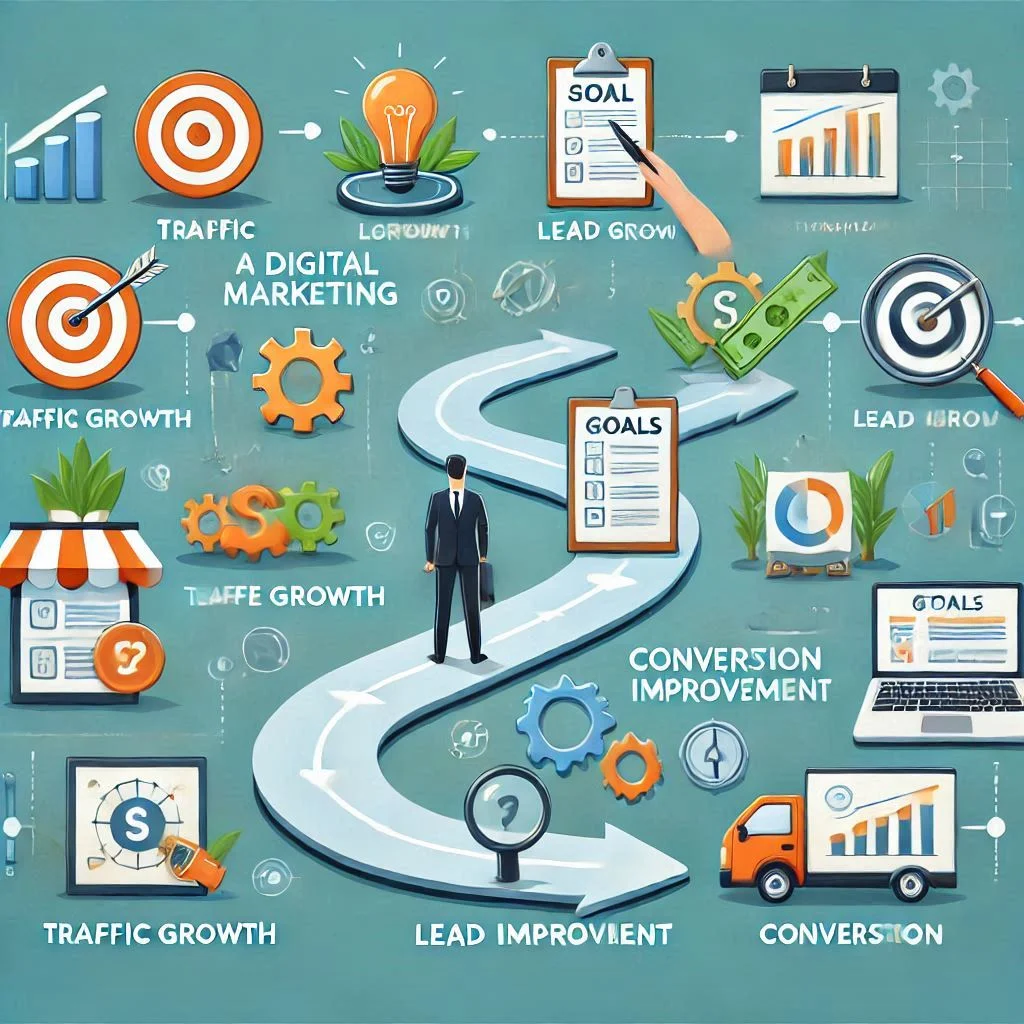
Identify Your Target Audience
Understanding your audience is crucial to crafting effective digital marketing campaigns. This involves:
- Creating Buyer Personas: Develop profiles that represent your ideal customers, including demographics, preferences, and pain points.
- Analyzing Audience Behavior: Use tools like Google Analytics or Facebook Insights to gather data on user behavior and interests.
- Segmenting Your Audience: Divide your audience into smaller groups for personalized targeting.
A clear understanding of your target audience ensures that your messaging resonates and drives engagement.

Select the Right Marketing Channels
Every digital marketing campaign relies on choosing the most effective channels for your audience and goals. Popular options include:
- Search Engines (SEO & PPC): Ideal for capturing high-intent traffic.
- Social Media Platforms: Great for engaging audiences and building brand awareness.
- Email Marketing: Best for nurturing leads and maintaining customer relationships.
- Content Marketing: Effective for educating and informing your audience.
The key is to focus on platforms where your audience spends the most time and align them with your objectives.
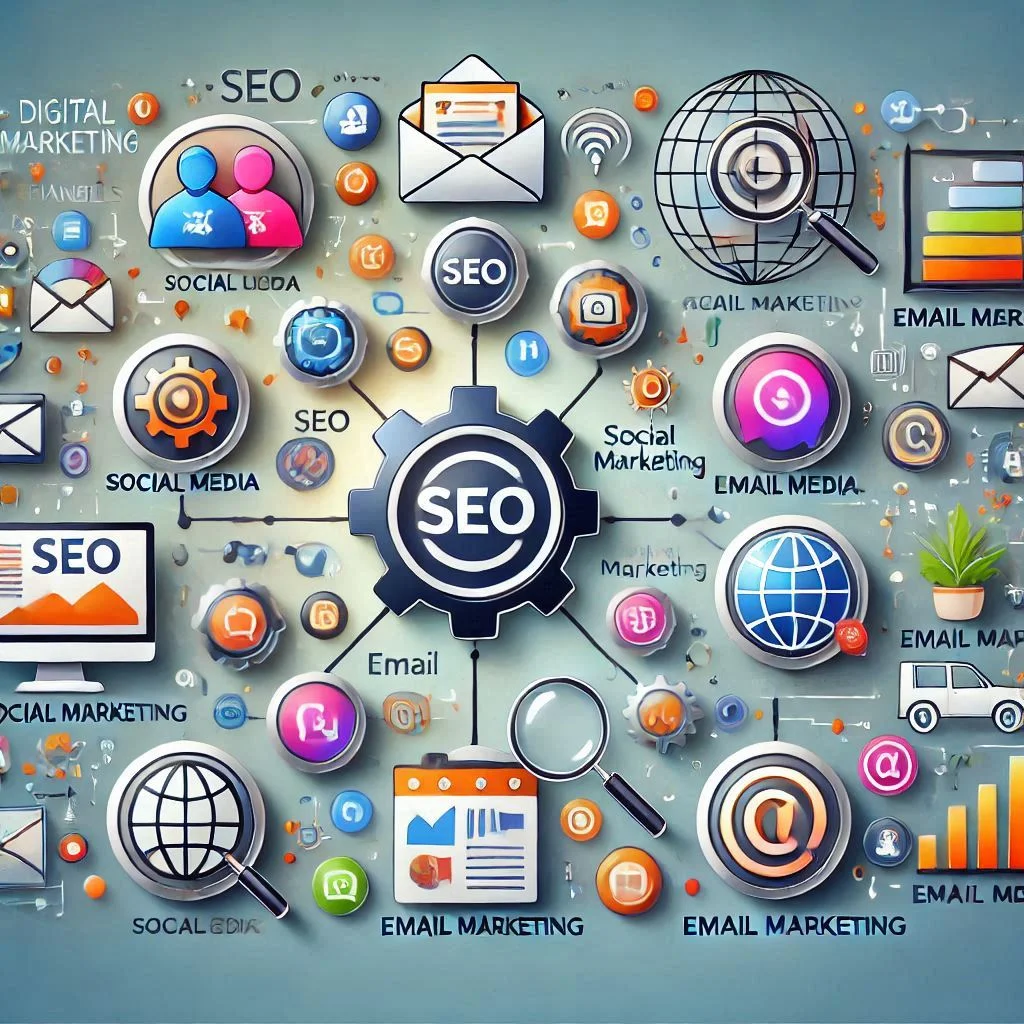
Develop and Optimize Content
Content is the cornerstone of digital marketing, and its quality can make or break your campaigns. Follow these best practices:
- Create Valuable Content: Focus on solving audience pain points with blog posts, videos, infographics, and more.
- Optimize for SEO: Use relevant keywords, meta descriptions, and header tags for better visibility.
- Use Multimedia: Engage users with images, videos, and interactive elements.
- Ensure Mobile-Friendliness: Optimize all content for mobile devices.
Regularly updating and repurposing content ensures it remains relevant and continues driving results.
Measure Campaign Success
Monitoring and analyzing campaign performance is essential to improve results over time. Key steps include:
- Tracking Metrics: Use KPIs like click-through rates (CTR), conversion rates, and ROI to evaluate success.
- Using Analytics Tools: Platforms like Google Analytics, SEMrush, and HubSpot help gather insights.
- Adjusting Strategies: Based on data, refine campaigns to focus on what works and eliminate ineffective tactics.
Regular measurement ensures continuous improvement and maximized ROI for your digital marketing efforts.
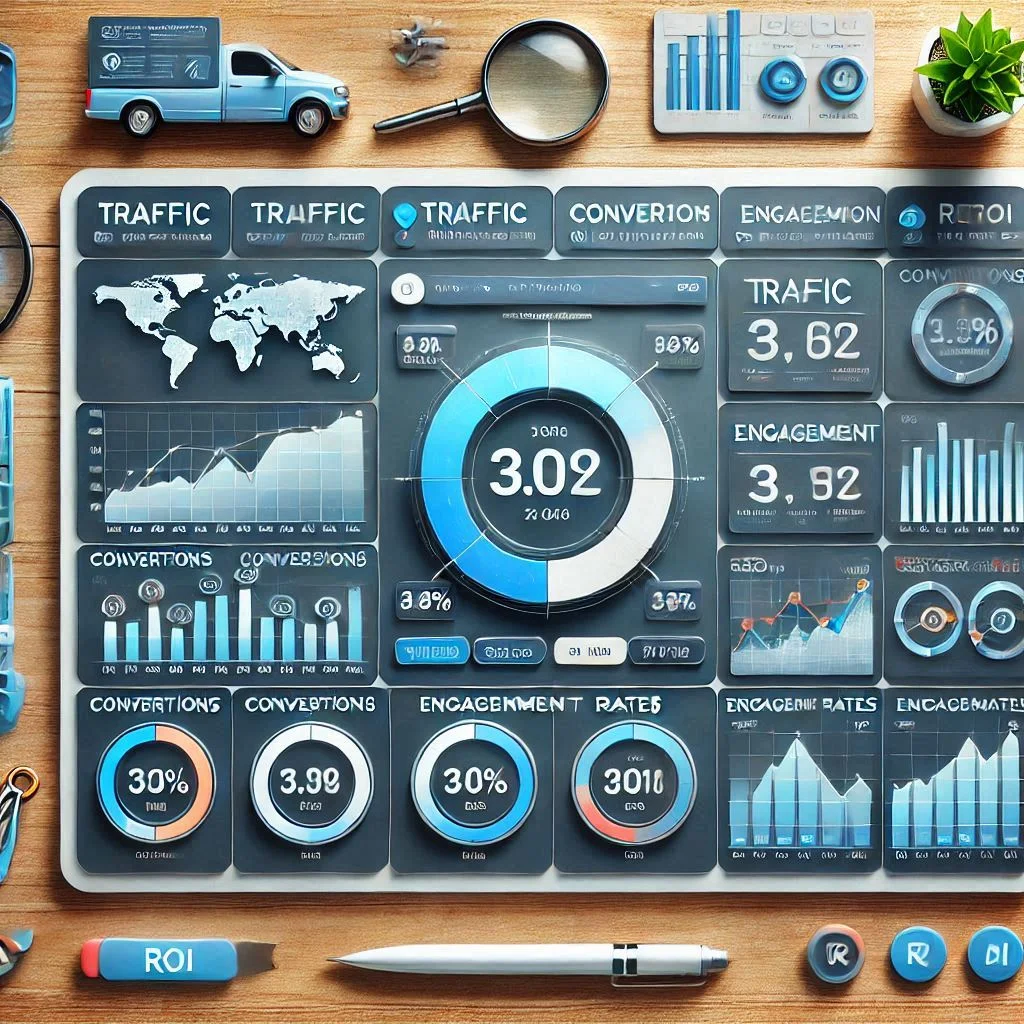
Types of Digital Marketing
Digital marketing encompasses a range of strategies and channels, each tailored to engage specific audiences and achieve distinct objectives. Below is a detailed explanation of the primary types of digital marketing and how they contribute to a successful campaign:
Ai Digital Marketing
Use of AI tools can help you to get more good results. Try out Zooli AI Marketing tool to improve digital marketing.
Search Engine Optimization (SEO)
SEO focuses on improving a website’s visibility on search engines like Google, Bing, or Yahoo. By optimizing website content and structure, businesses can rank higher for relevant keywords.
Key Elements of SEO:
- On-Page SEO: Optimizing page titles, meta descriptions, headers, and keyword usage.
- Off-Page SEO: Building backlinks and promoting content through external platforms.
- Technical SEO: Enhancing website speed, mobile-friendliness, and site architecture.
Benefits:
- Increases organic traffic.
- Builds trust and authority.
- Generates long-term results.
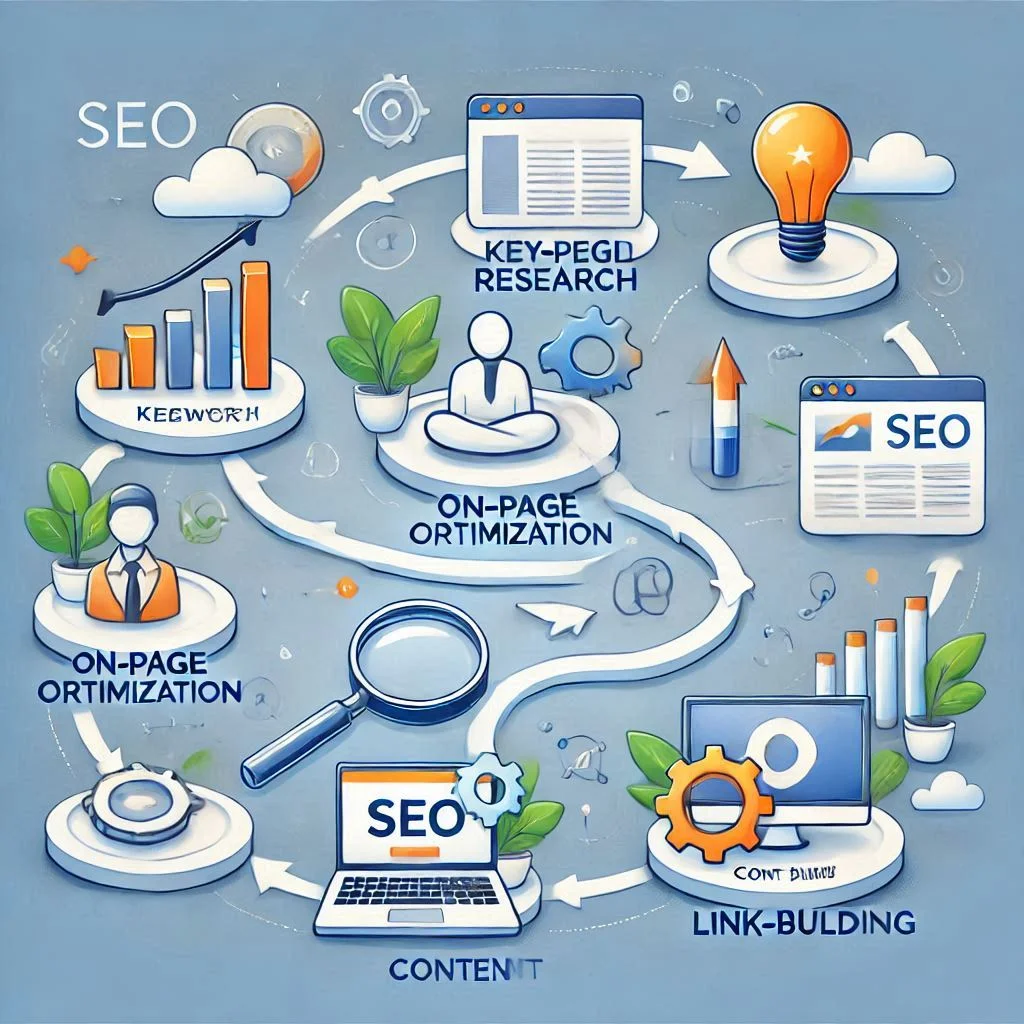
Content Marketing
Content marketing involves creating and sharing valuable, relevant, and engaging content to attract and retain a target audience.
Popular Content Types:
- Blog posts and articles.
- Infographics and eBooks.
- Videos and podcasts.
Benefits:
- Establishes brand authority.
- Educates and informs the audience.
- Drives traffic and improves SEO.
Best Practices:
- Research audience needs and preferences.
- Use keywords strategically.
- Focus on high-quality, original content.
Social Media Marketing
Social media marketing leverages platforms like Facebook, Instagram, Twitter, LinkedIn, and TikTok to connect with audiences.
Key Strategies:
- Engagement: Responding to comments, messages, and trends.
- Advertising: Running targeted ad campaigns.
- Content Sharing: Posting visuals, stories, and interactive polls.
Benefits:
- Builds brand loyalty.
- Drives website traffic.
- Increases customer engagement.

Pay-Per-Click (PPC) Marketing
PPC is a paid advertising model where businesses pay a fee each time their ad is clicked. Platforms like Google Ads and Bing Ads are common for PPC campaigns.
Key Features:
- Search Ads: Appear on search engine results pages (SERPs).
- Display Ads: Shown on websites and apps.
- Retargeting Ads: Target users who previously interacted with your site.
Benefits:
- Immediate visibility and traffic.
- Precise targeting options.
- Measurable results and ROI.
Email Marketing
Email marketing involves sending promotional or informational emails to a targeted audience.
Types of Emails:
- Newsletters.
- Promotional offers.
- Customer feedback requests.
Benefits:
- Direct communication with customers.
- High conversion rates.
- Cost-effective for nurturing leads.
Best Practices:
- Personalize subject lines and content.
- Use clear call-to-action (CTA).
- Optimize for mobile devices.
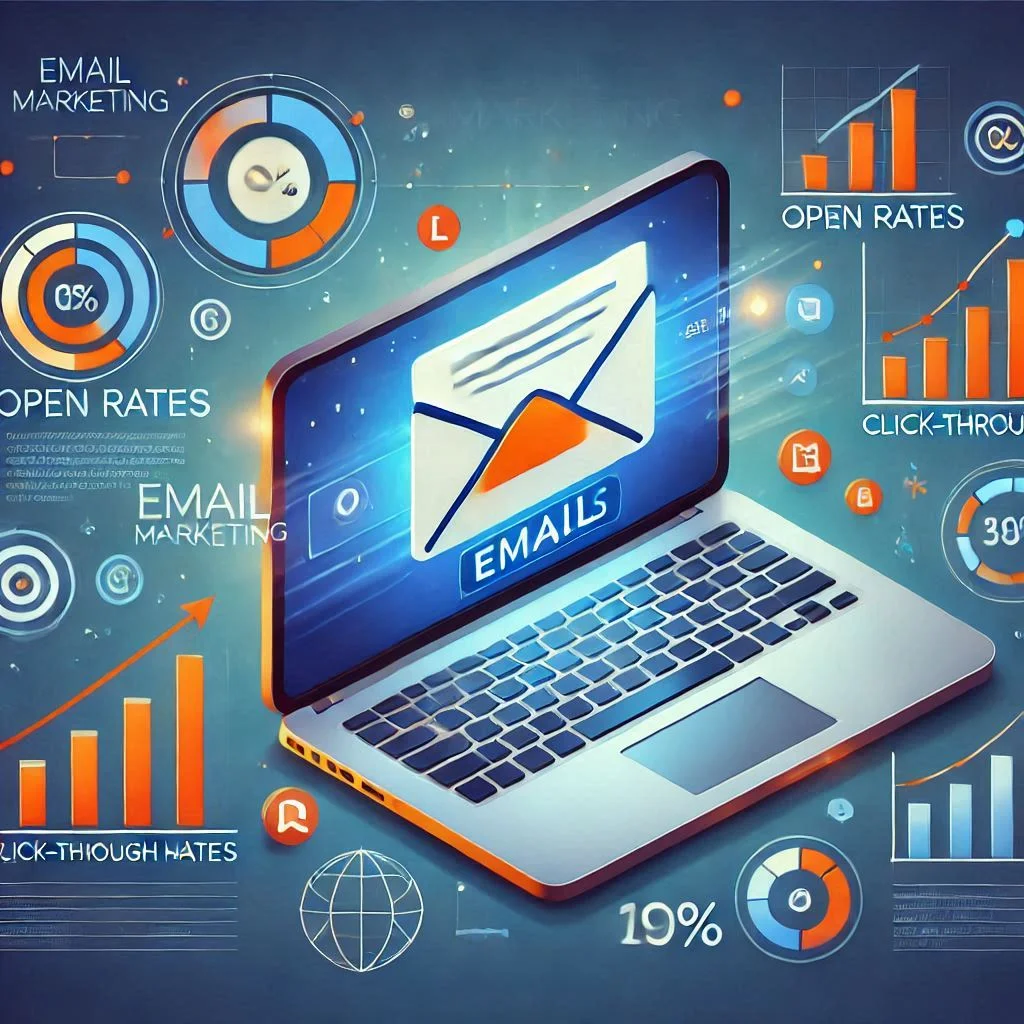
Affiliate Marketing
Affiliate marketing involves partnering with individuals or businesses who promote your products or services in exchange for a commission.
How It Works:
- Affiliates share unique referral links.
- Commissions are earned for every sale or lead generated through the link.
Benefits:
- Cost-effective as you only pay for results.
- Expands your reach through affiliates’ networks.
- Builds brand credibility.
Video Marketing
Video marketing uses engaging video content to promote products or services. Popular platforms include YouTube, Instagram Reels, and TikTok.
Popular Formats:
- Tutorials and demos.
- Testimonials and case studies.
- Live streaming and webinars.
Benefits:
- Increases engagement and retention.
- Boosts conversions with compelling visuals.
- Improves SEO with video content on websites.
Mobile Marketing
Mobile marketing targets users on their smartphones and tablets through SMS, MMS, in-app ads, and mobile-friendly websites.
Key Tactics:
- Mobile-friendly website design.
- Location-based marketing.
- SMS and push notifications.
Benefits:
- Connects with users in real-time.
- High engagement rates.
- Drives local traffic.
Benefits of Digital Marketing
Digital marketing has revolutionized the way businesses connect with their audiences. Its flexibility, scalability, and effectiveness have made it an indispensable tool for achieving growth and success. Here’s a comprehensive look at the key benefits of digital marketing:
A Broad Geographic Reach
One of the standout advantages of digital marketing is its ability to transcend geographical boundaries.
- Global Audience Access: Businesses can reach potential customers worldwide without the limitations of physical distance.
- Local Targeting: Geotargeting tools help narrow down to specific regions, cities, or neighborhoods.
- Scalable Campaigns: Campaigns can easily expand to new markets as the business grows.
Digital marketing empowers businesses to tap into previously inaccessible markets, significantly expanding their customer base.

Cost Efficiency
Compared to traditional advertising methods like TV, print, or radio, digital marketing offers a much more budget-friendly solution.
- Lower Initial Investment: Businesses can start small with options like pay-per-click ads or social media campaigns.
- Higher ROI: Digital marketing ensures better returns as campaigns can be tailored to target only relevant audiences.
- Flexible Budgets: Options to scale budgets based on performance and business needs.
Small businesses, in particular, benefit immensely by competing with larger companies without the need for massive marketing budgets.
Quantifiable Results
Traditional marketing often struggles to provide accurate insights into campaign performance. Digital marketing, however, is data-driven.
- Real-Time Analytics: Tools like Google Analytics and SEMrush provide immediate insights into campaign performance.
- Track Key Metrics: Metrics such as click-through rates (CTR), conversion rates, and ROI help measure effectiveness.
- Improved Decision-Making: Insights from data allow for informed tweaks and optimizations.
Quantifiable results ensure businesses can continuously improve their strategies for maximum impact.
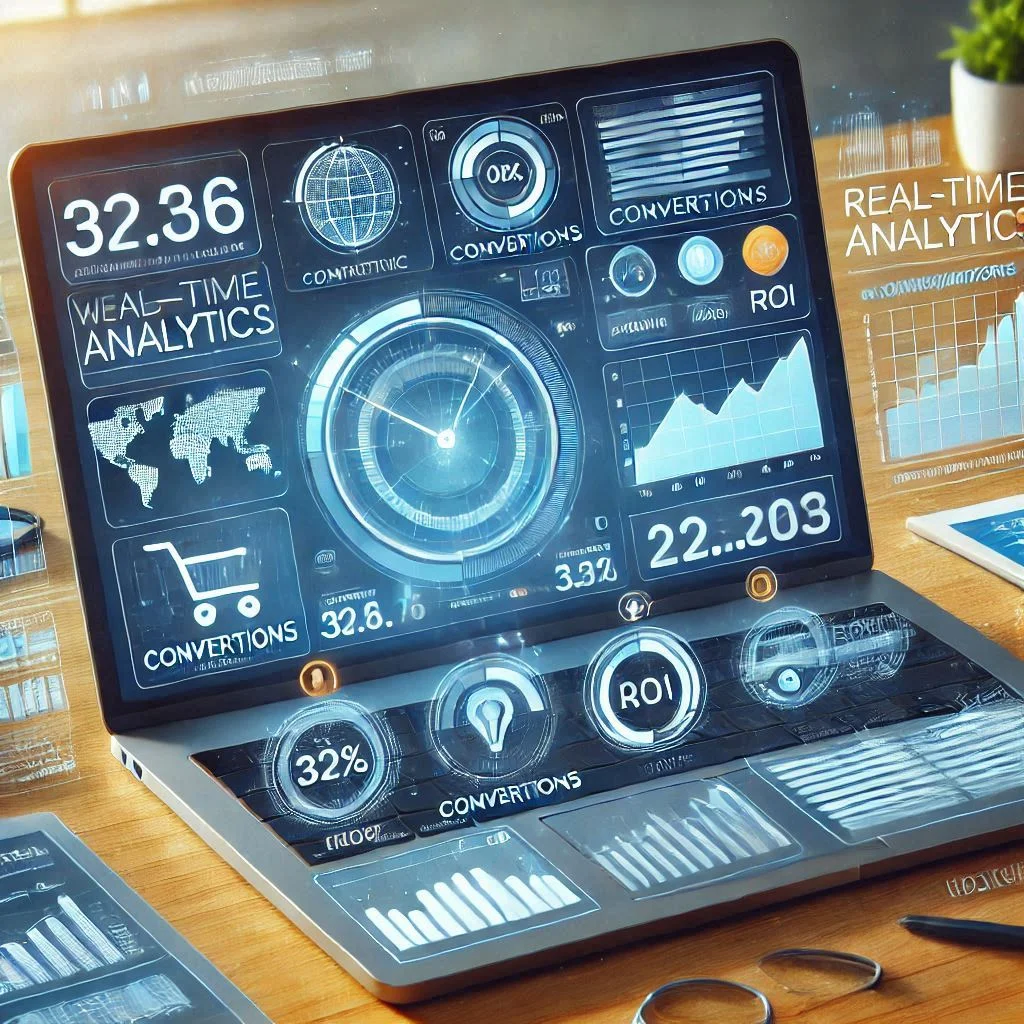
Easier Personalization
Digital marketing allows businesses to tailor content and experiences for individual users.
- Segmentation: Dividing audiences into groups based on preferences, behavior, or demographics.
- Dynamic Content: Personalized email subject lines, targeted ads, and recommended products based on user activity.
- Enhanced User Experience: Delivering relevant content improves customer satisfaction and brand loyalty.
Personalization leads to stronger connections with customers, increasing engagement and conversion rates.
Increased Customer Connections
Digital marketing facilitates direct communication with customers, fostering relationships and trust.
- Interactive Platforms: Social media allows businesses to engage through comments, messages, and live sessions.
- Immediate Feedback: Businesses can address concerns or questions in real time, enhancing customer satisfaction.
- Building Communities: Through platforms like Facebook groups or forums, brands can create loyal customer communities.
Regular interaction builds a sense of trust and credibility among the audience.
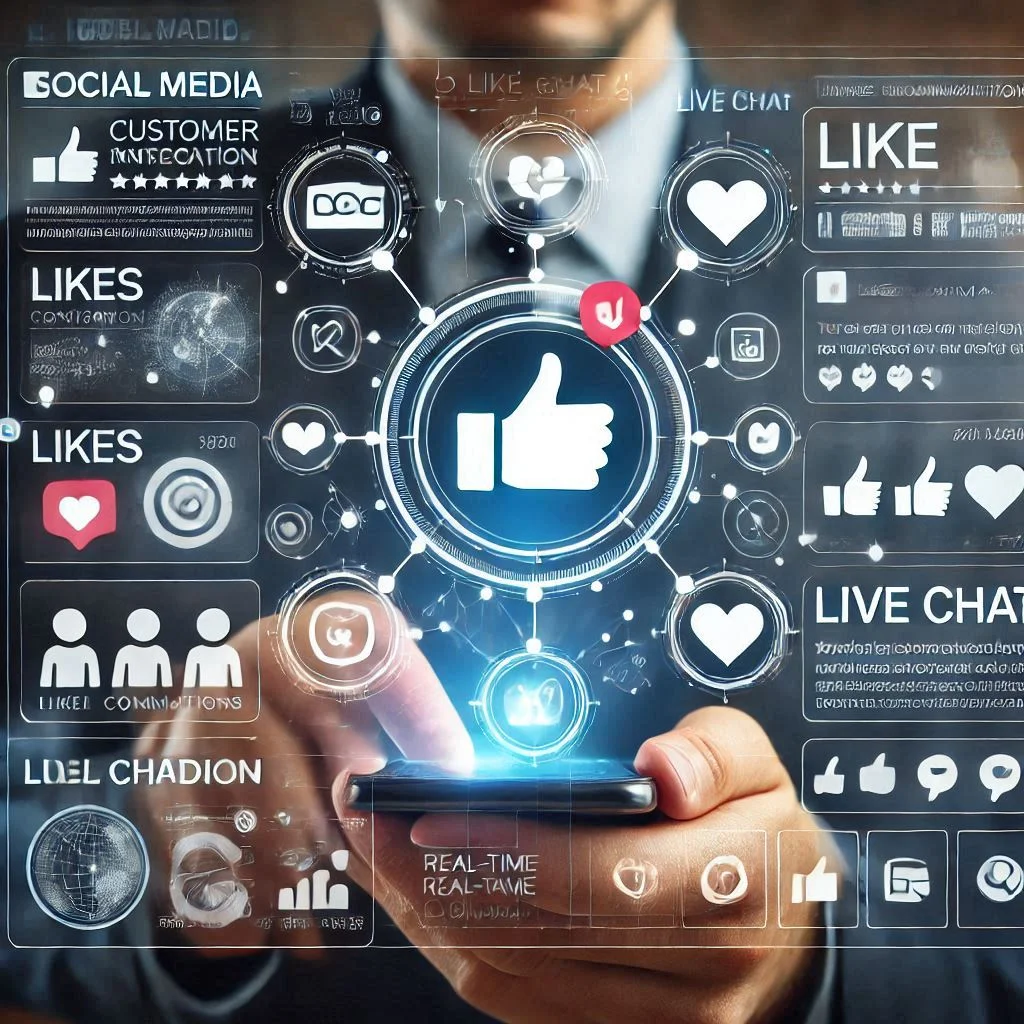
Convenient Conversions
The simplicity and accessibility of digital marketing channels make it easier for users to convert into customers.
- One-Click Actions: CTAs like “Buy Now,” “Subscribe,” or “Learn More” streamline the user journey.
- 24/7 Accessibility: Unlike physical stores, digital platforms remain open round the clock, catering to global time zones.
- Simplified Funnels: Seamless processes from ad to checkout ensure fewer drop-offs.
Convenient conversions help reduce friction in the sales process, resulting in higher revenue and customer satisfaction.
How to Create a Digital Marketing Strategy
A well-defined digital marketing strategy is essential for driving business success in today’s competitive online environment. Below is a detailed guide on crafting a winning digital marketing strategy step by step.
Set SMART Goals
The first step in creating an effective strategy is defining your goals using the SMART framework:
- Specific: Clearly state what you want to achieve (e.g., “Increase website traffic by 20% in three months”).
- Measurable: Use metrics to track progress, such as website visits, click-through rates, or conversions.
- Achievable: Ensure the goals are realistic based on your resources and capabilities.
- Relevant: Align goals with your broader business objectives.
- Time-Bound: Assign a deadline for achieving the goal (e.g., “Generate 500 new leads by the end of Q4”).
Well-defined goals provide direction and focus, enabling you to allocate resources effectively.
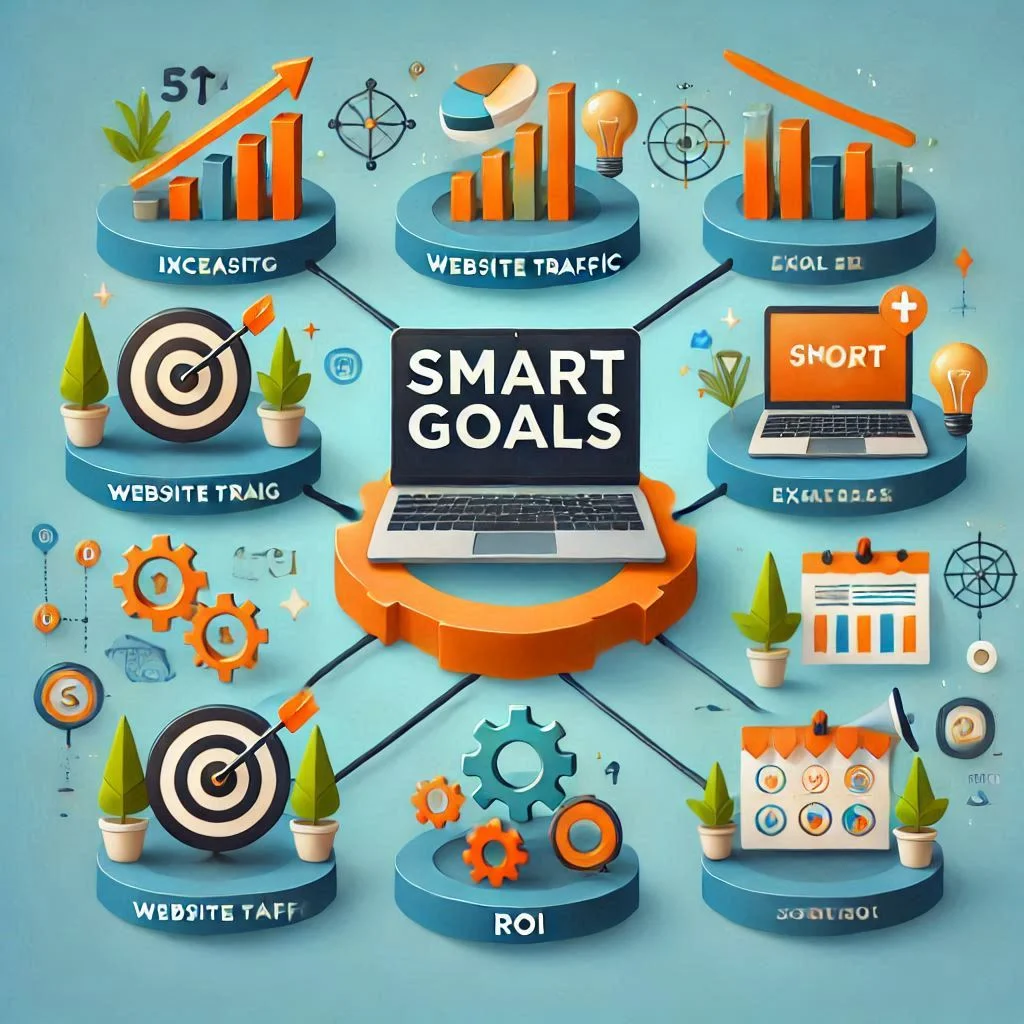
Identify Your Audience
Knowing your target audience is critical for designing personalized marketing campaigns.
- Create Buyer Personas: Develop detailed profiles that include demographics, preferences, challenges, and purchasing behavior.
- Segment Your Audience: Divide your audience into smaller groups based on factors like age, location, or buying habits.
- Understand Pain Points: Analyze customer challenges and position your product or service as the solution.
Accurate audience identification ensures your messaging resonates and drives engagement.
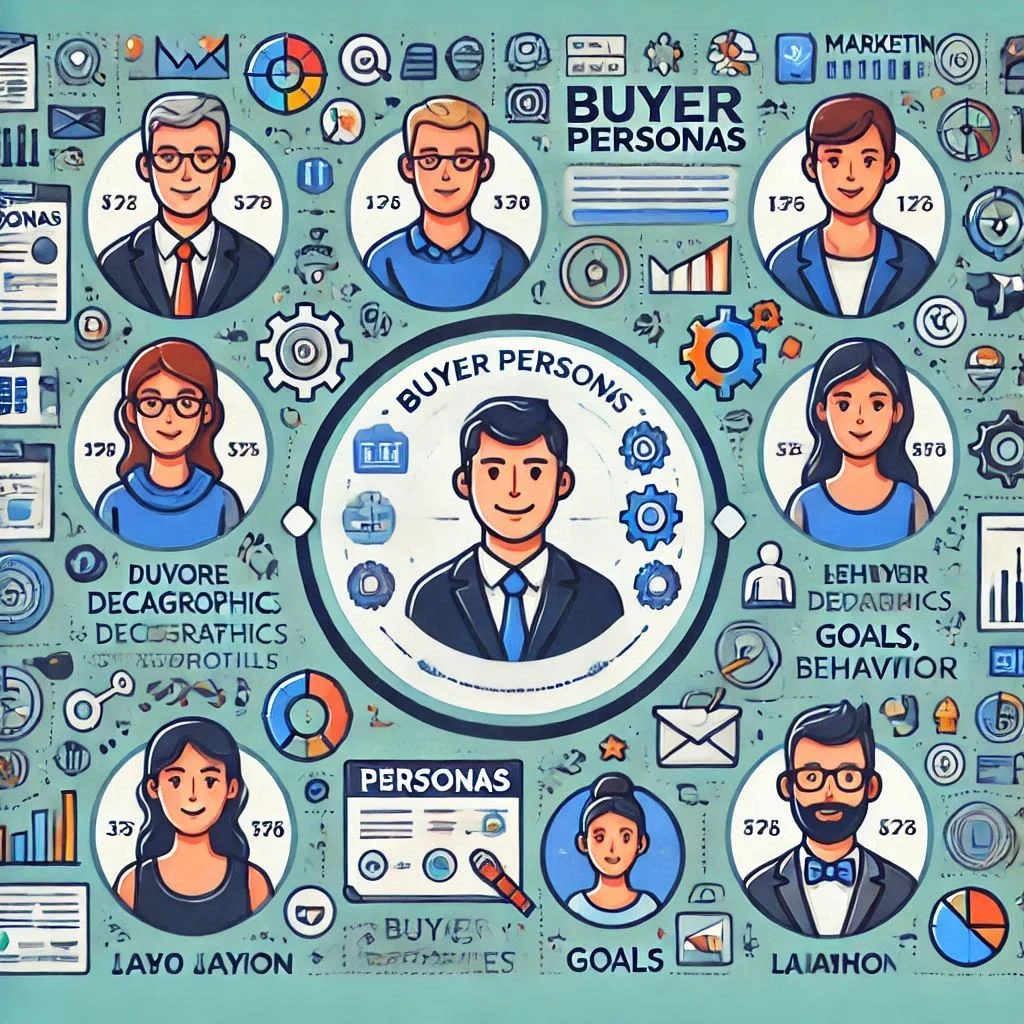
Create a Budget
An essential part of your strategy is determining how much to invest in digital marketing and allocating funds across channels.
- Evaluate Past Campaigns: Use data to identify what has worked before and allocate resources accordingly.
- Prioritize High-ROI Channels: Invest in channels like SEO, PPC, or social media that deliver measurable results.
- Leave Room for Experimentation: Allocate a portion of the budget for testing new strategies or platforms.
A well-planned budget ensures maximum impact without overspending.
Choose Digital Marketing Channels
The effectiveness of your strategy depends on selecting the right mix of marketing channels.
- Search Engine Optimization (SEO): Ideal for increasing organic visibility and long-term traffic.
- Social Media Marketing: Engages audiences and builds brand loyalty.
- Email Marketing: Nurtures leads and fosters customer retention.
- Pay-Per-Click (PPC) Advertising: Drives immediate traffic and conversions.
- Content Marketing: Educates and informs your audience to establish authority.
Focus on channels that align with your audience preferences and business goals.
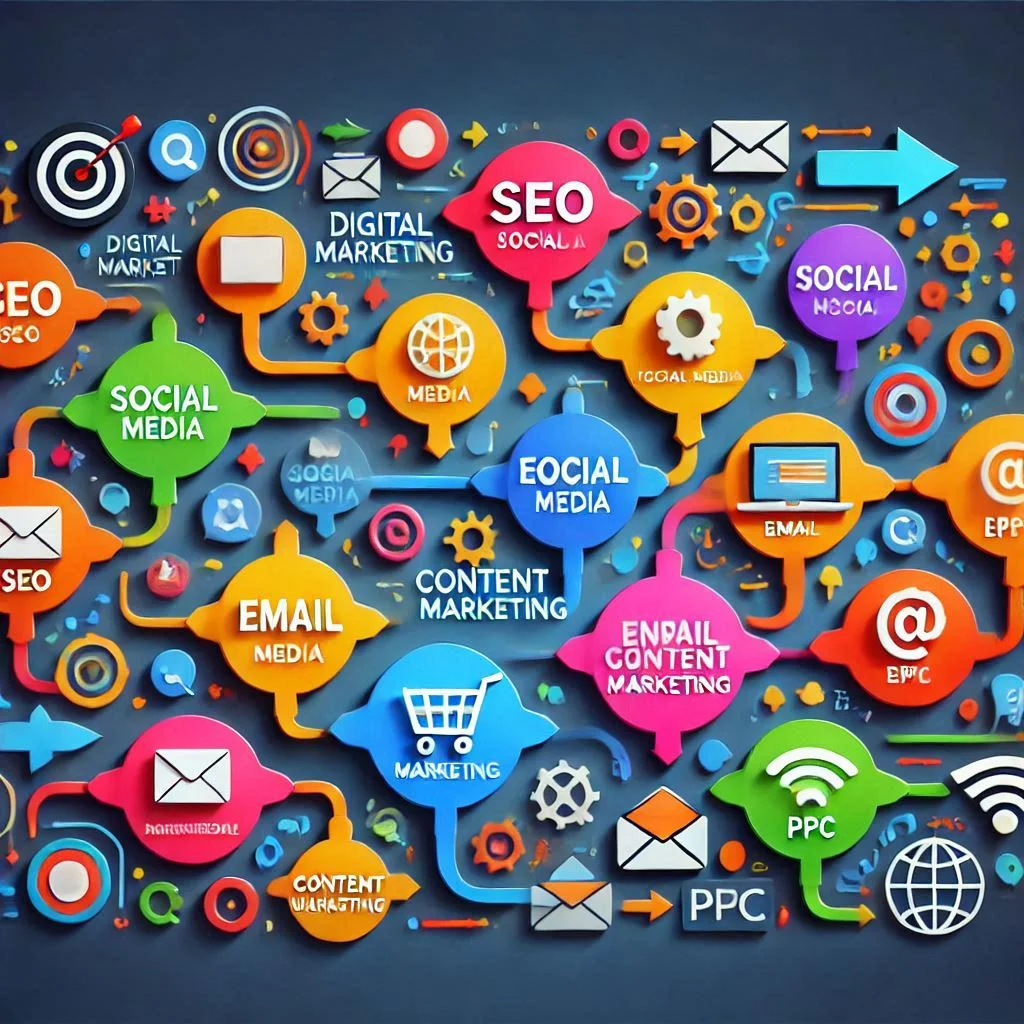
Refine Your Strategy
Digital marketing requires continuous optimization to remain effective.
- Monitor Metrics: Track performance through analytics tools and dashboards.
- Gather Feedback: Use surveys, reviews, or direct customer interactions to refine messaging.
- Test and Adapt: Experiment with A/B testing, new ad formats, or different content types.
- Analyze Competitors: Study what works for competitors and incorporate relevant elements into your campaigns.
Future of Digital Marketing
Digital marketing is an ever-evolving field, and staying ahead of trends and technological advancements is crucial for businesses to thrive. The future promises even more innovative ways to connect with audiences, enhance customer experiences, and drive growth.
Trends Shaping the Future
Emerging trends are redefining digital marketing strategies and offering new opportunities for growth:
- Artificial Intelligence (AI) Integration:
- AI-powered tools are enhancing personalization, predictive analytics, and customer support.
- Chatbots and virtual assistants provide real-time, 24/7 customer service.
- AI helps optimize ad targeting and content creation with data-driven insights.
- Voice Search Optimization:
- The rise of smart speakers and voice assistants is shifting SEO strategies.
- Long-tail keywords and conversational content are becoming vital for ranking in voice search results.
- Video and Interactive Content:
- Live streaming, shoppable videos, and augmented reality (AR) experiences are engaging audiences like never before.
- Interactive elements like quizzes, polls, and infographics boost user engagement and dwell time.
- Sustainability and Ethical Marketing:
- Brands focusing on eco-friendly practices and transparent messaging resonate more with modern consumers.
- Data Privacy and Security:
- Adapting to stricter data regulations like GDPR ensures compliance and builds consumer trust.
- Emphasis on first-party data collection to reduce dependency on third-party cookies.

Role of Technology in Digital Marketing Growth
Technology is the backbone of digital marketing, driving innovation and efficiency.
- Advanced Analytics Tools:
- Tools like Google Analytics 4 (GA4) and AI-driven platforms offer deep insights into customer behavior and campaign performance.
- Predictive analytics helps in anticipating trends and tailoring strategies accordingly.
- 5G and Enhanced Connectivity:
- Faster internet speeds enable high-quality video streaming, interactive content, and immersive experiences.
- Improved mobile marketing capabilities enhance user accessibility and engagement.
- Blockchain Technology:
- Ensures transparency in advertising by verifying ad impressions and clicks.
- Strengthens data security and builds consumer trust.
- Programmatic Advertising:
- Automates the buying and placement of ads for highly targeted and efficient campaigns.
- Reduces human error and optimizes ad spend.
- Augmented Reality (AR) and Virtual Reality (VR):
- AR applications allow customers to visualize products before purchase, enhancing decision-making.
- VR creates immersive experiences, especially for industries like real estate, gaming, and education.

Adapting to Future Innovations
Businesses need to stay proactive and embrace technological advancements:
- Upskilling Teams: Invest in training for AI, data analytics, and emerging tools.
- Experimentation and Flexibility: Regularly test new platforms and trends to find what resonates with your audience.
- Focus on User Experience (UX): Design seamless and responsive user experiences across all touchpoints.
- Leveraging Automation: Automate repetitive tasks like email marketing, social media scheduling, and customer service to save time and resources.

Conclusion
Digital marketing has revolutionized the way businesses connect with their audience, offering unparalleled opportunities for growth and innovation. From understanding the fundamentals of digital marketing to exploring its benefits, types, and future trends, businesses can leverage these insights to craft effective strategies that resonate with their target audience. As technology continues to evolve, adapting to emerging trends and embracing data-driven, customer-centric approaches will be crucial for staying competitive in the digital landscape. By setting SMART goals, refining strategies, and utilizing the right tools and channels, businesses can achieve sustainable growth and build long-lasting relationships with their customers. The future of digital marketing is bright—embrace it to take your business to new heights.

